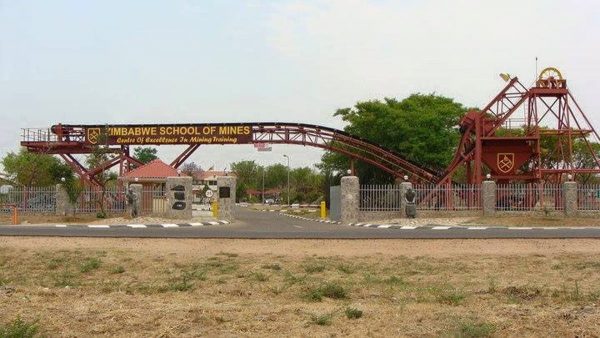A group of enthusiastic geology students from the Zimbabwe School of Mines (ZSM) who recently attended the Geological Society of Zimbabwe Summer Symposium and MacGregor Memorial Lecture, held at the Natural History Museum of Zimbabwe in Bulawayo, expressed keen interest in the symposium presentations.
By Rudairo Mapuranga
According to the students, the event provided valuable insights into various aspects of geology, sparking discussions and inspiring future generations of geologists.
One key takeaway from the symposium was the importance of exploring under-explored areas in Zimbabwe. Rudolph Mandava, a student at the School of Mines, highlighted the need for more presentations on areas like those managed by the Zimbabwe Consolidated Diamond Company, where limited data is publicly available.
“I found the presentation on lepidolite fascinating. The presenter discussed pegmatites and mentioned that not all pegmatites originate from granites, and not all contain lepidolite. Some can also be sources of gemstones. That was my key takeaway. In the future, I think there should be a focus on areas in Zimbabwe that lack exploration. For example, the Zimbabwe Consolidated Diamond Company has little to no publicly available data. I believe symposiums could also address such resources,” he said.
Munashe Munashe, another student, was inspired by a presentation on the Zimbabwe Aitken Craton and the Kaapvaal Craton, suggesting that they may have once been a single landmass before the formation of the Limpopo Belt. He recommended increased interaction between the Geological Society of Zimbabwe and educational institutions like the School of Mines, proposing public lectures and educational campaigns to raise awareness about the Society’s work.
“I learned a lot, especially from Dr. Mark’s presentation. He discussed the Zimbabwe Aitken Craton and the Kaapvaal Craton, both part of the Kalahari Craton. He suggested that the two cratons may have been one before the formation of the Limpopo Belt caused their separation. The Zimbabwe Aitken Craton became the North Kalahari Craton, while the Kaapvaal Craton became the South Kalahari Craton. If the Geological Society of Zimbabwe could conduct educational campaigns at institutions like the School of Mines, they could host public lectures for geology students. Many students graduate without knowing what the Geological Society of Zimbabwe is. For example, we attended this symposium today but missed last year’s. Improved interaction between schools and the Geological Society could enhance education,” Munashe said.
Welshman Siyabonga Sibanda expressed interest in the Tokopane project presentation, which has revealed gold mineralization beneath the Kalahari Sands. He emphasized the potential economic benefits of such discoveries and the importance of collaboration between mining companies and academic institutions to promote education and research in resource exploration.
“We learned more about geology, which is a fascinating field. I’d like to focus on the Tokopane project, which has been an enigma for years. In Tsholotsho, the Kalahari Sands were visible on the surface, but beneath them, a greenstone belt appeared. Through geochemical analysis and borehole sampling, we discovered gold mineralization in the area, which was previously inaccessible due to the thick sand cover. Eriana Resources is now working to improve confidence in the deposit through methods like drilling, geochemical sampling, and XRF analysis. This is positive for Zimbabwe’s untapped resources. If we invest in this, it could benefit the Zimbabwean economy. The payback period is estimated at 2.5 years, which is promising. I recommend open-pit mining for this project. It would be great if Eriana Resources could engage with institutions like the Zimbabwe School of Mines to foster education in resource learning, exploration, and classification,” Sibanda said.
Wisdom Maopa and Gerald Hove, fellow students, said they were excited by presentations on the geological significance of the Bushveld Igneous Complex and the Limpopo Belt. They also suggested that the Geological Society of Zimbabwe could organize memorial lectures at individual institutions to engage students more directly and foster a deeper understanding of geological concepts.
“To summarize what I learned from the Geological Society of Zimbabwe at the Natural History Museum, I’d like to briefly touch on the Bushveld Igneous Complex. It has five zones: the upper zone, the main zone, the critical zone, the lower zone, and the marginal zone. The upper zone consists of gabbro, the critical zone of chromitite, and the lower zone of dunite and pyroxenite. I also learned about the Limpopo Belt, which is composed of high-grade metamorphic rocks. It formed as a result of continental collision between the Zimbabwe Craton and the Kaapvaal Craton. The Limpopo Belt, which is Archaean in age, formed when the two continents were part of one larger continent,” Maopa said.
Gerald Hove added, “I would like to recommend that the Geological Society of Zimbabwe consider holding memorial lectures at individual institutions. This would involve students in these discussions and increase their knowledge.”
The symposium served as a platform for students to learn from experienced geologists, network with peers, and gain practical insights into the challenges and opportunities in the field. By fostering such interactions and promoting education, the Geological Society of Zimbabwe can play a vital role in inspiring future generations of geologists and driving the development of Zimbabwe’s mining industry.
.png)




